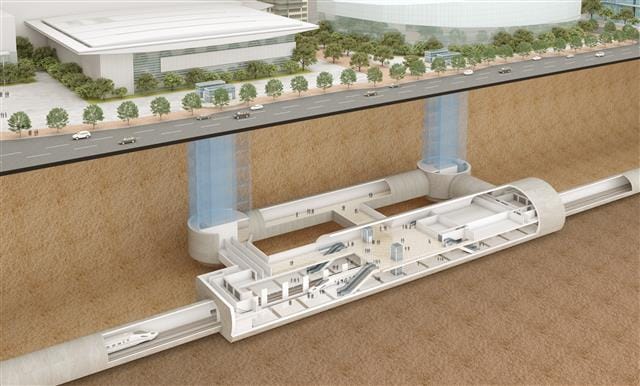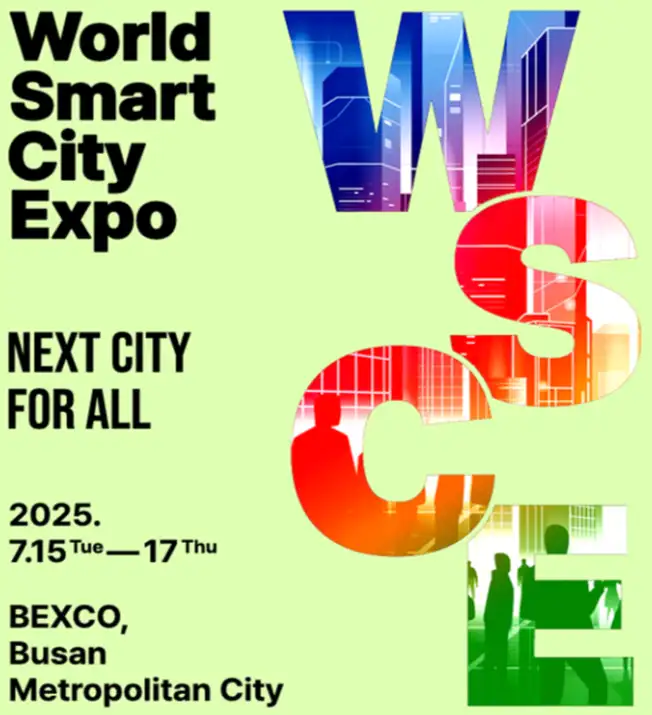Busan Bets Big on Hydrogen Express Rail — But Can BuTX Deliver?
Busan is racing to complete BuTX, a hydrogen-powered express rail set to open with Gadeokdo Airport by 2030. But unstable terrain, unproven tech, and limited public data raise red flags.

BUSAN, South Korea — As Busan accelerates efforts to reimagine its transit infrastructure, the city has placed its bet on an ambitious new project: BuTX, or Busan Train eXpress. Positioned as the centerpiece of the upcoming Second Urban Rail Master Plan (2026–2035), BuTX is envisioned as a high-speed, hydrogen-powered express rail line connecting Gadeokdo New Airport with key economic, residential, and tourism districts across the city in under 30 minutes.
BuTX is more than just a transport project. It is being framed as the spine of Busan’s next-generation urban mobility strategy—one that aligns with national carbon neutrality goals, revitalizes underdeveloped western corridors, and projects the city’s global aspirations.
But beneath the sleek branding and optimistic projections lie a series of unresolved questions—about engineering feasibility, technological readiness, and the risks of racing toward a deadline without fully mapping the terrain.
According to plans released by the Busan Metropolitan Government, BuTX will run from Gadeokdo Airport through Myeongji, Hadan, North Port, Bujeon, Centum, and terminate at the Osiria Tourism Complex in Gijang. The route was selected for both symbolic and strategic reasons—it links two critical economic zones (Gadeokdo and Osiria), cuts across densely populated urban hubs, and is designed to bridge long-standing east-west development imbalances.
Most notably, the line will operate via a deep tunnel system, enabling uninterrupted express service beneath congested urban areas. The project envisions the use of hydrogen-powered rolling stock, a first for South Korea, aiming to position Busan at the forefront of eco-smart mobility innovation.
The urgency stems from the anticipated opening of Gadeokdo New Airport by 2030, a national megaproject that requires seamless connectivity to Busan’s central districts. City officials have declared BuTX as the No.1 investment priority in its 10-year transit roadmap and aim to fast-track administrative procedures, including feasibility approvals, public-private partnerships, and eventual construction.
The Engineering Frontier: Can the Ground Hold?
The question of whether BuTX can succeed is not simply a matter of financial investment or urban ambition. It is a question of whether the ground beneath Busan is ready—and safe—for what is being planned above it.
Beneath the ambitious vision of BuTX lies a foundation that is far from stable—literally. Busan’s complex and often treacherous geological conditions present one of the most formidable challenges to the success of the proposed express line. While the city projects a sleek, high-speed rail connection threading its way from Gadeokdo Airport to Osiria in under 30 minutes, the subterranean reality may prove far more resistant to such acceleration.
Several segments of the BuTX route—particularly those between Hadan–Nampo and Centum–Osiria—traverse areas notorious for their unstable ground composition. These zones include reclaimed coastal land, marine clay layers, and soft alluvial soils, often saturated with groundwater. Historically, such conditions have been a nightmare for civil engineers, leading to extensive delays, structural failures, and skyrocketing costs in previous infrastructure projects across western Busan.
For instance, the Busan Subway Line 1 extension and sections of Line 2 near Haeundae encountered repeated geotechnical setbacks due to insufficient bearing capacity, unexpected subsidence, and groundwater intrusion. In the Hadan and Nampo areas, past reports from the Busan Infrastructure Corporation highlighted the presence of weak subsoil strata, requiring deep piling, ground improvement injections, and cut-and-cover bypass methods—all of which drastically increased construction timeframes and budgets.
Yet despite these precedents, the current BuTX plan—publicly announced as the top priority of Busan’s Second Urban Rail Master Plan—has not been accompanied by any detailed geotechnical feasibility study or risk model disclosure. To date, no soil boring data, stratigraphy maps, or slope stability simulations have been released to the public or to independent oversight bodies. This lack of transparency has raised red flags among industry professionals.
Civil engineering experts emphasize that a project of BuTX’s scale and complexity demands a multi-phase geotechnical risk management framework, particularly because it proposes deep-bore tunneling over extended distances and through highly varied terrain. Advanced tunneling techniques like TBM (Tunnel Boring Machine) operations, pressurized slurry shields, and soil-freezing might be required—none of which are cheap or foolproof, especially under a politically driven construction schedule.
Furthermore, high-speed hydrogen trains—expected to reach operating speeds of over 100 km/h underground—place significantly more stress on tunnel integrity and vibration-sensitive zones than traditional subways. Without rigorous assessment of seismic risk, longitudinal ground movement, and hydrostatic pressure, these technical variables could compound the project’s vulnerability.
The question of whether BuTX can succeed is not simply a matter of financial investment or urban ambition. It is a question of whether the ground beneath Busan is ready—and safe—for what is being planned above it. Without immediate publication of soil survey data, continuous environmental monitoring, and contingency design planning, the city's push for speed may well collide with a far more immovable reality underground.
Hydrogen Rail: The Promise—and the Uncertainty
At the heart of BuTX’s futuristic branding lies a bold technological promise: hydrogen-powered rail. Positioned as a cornerstone of Busan’s push toward eco-urban mobility, hydrogen-electric trains represent the city's commitment to clean, high-capacity transportation. But while the technology is undeniably forward-looking, its real-world application—particularly in deep tunnel urban environments—remains largely aspirational.
In South Korea, Hyundai Rotem is at the forefront of hydrogen rail development. Its prototype hydrogen-electric train completed initial pilot tests in 2023, drawing attention for its potential to decarbonize regional transport. Yet, full-scale commercialization is not projected until after 2027, and crucially, no hydrogen-powered train has yet been certified for operation in underground tunnels. That distinction matters. Unlike surface routes, deep tunnel operations in dense cities require highly sophisticated safety protocols: hydrogen containment, ventilation systems, emergency fire suppression, and passenger evacuation procedures. All of these remain under active development.
The international picture reflects similar caution. Germany’s Coradia iLint, the world’s first operational hydrogen train, runs only on non-electrified rural lines, avoiding the complexities of underground or high-frequency urban corridors. Japan’s FV-E991 hybrid hydrogen-battery model remains in the testing phase, with no fixed deployment timeline. These examples underscore the current technological ceiling: hydrogen trains are proven in concept, but far from deployment-ready in metro-scale infrastructure like BuTX.
Moreover, cost remains a barrier. Hydrogen fuel is significantly more expensive than battery-electric alternatives, especially when applied to high-capacity rail systems. South Korea’s national hydrogen refueling infrastructure is still in its infancy, with no established logistics chain for large-scale urban rail deployment. Even with aggressive government subsidies, infrastructure investments required for fueling stations, maintenance facilities, and safety retrofitting are immense.
Yet despite these limitations, BuTX’s planning is on an accelerated political timeline. The City of Busan has explicitly linked the express rail’s launch to the scheduled 2030 opening of Gadeokdo New Airport, envisioning the two as twin symbols of a post-industrial transformation. To meet this goal, the city is considering a public-private partnership (PPP) financing model. Feasibility studies and private investment proposals are reportedly under review, but any construction start remains contingent on approval from the Ministry of Land, Infrastructure and Transport (MOLIT), as well as national budget allocations and legal clearances.
Urban planning experts, however, warn that this "speed-before-safety" approach may risk more than timelines. Without sufficient public consultation, technical due diligence, or release of environmental data, BuTX could repeat the pitfalls of past infrastructure projects that prioritized symbolism over structural stability.
The broader ambition behind BuTX is significant. It is envisioned as a linchpin in Busan’s strategic portfolio, complementing plans for Smart Port 2.0, K-UAM (Korean Urban Air Mobility) integration, and green hydrogen manufacturing zones. The route would connect critical economic and tourism districts—from the new airport and logistics centers to AI industrial zones and Osiria’s leisure clusters—positioning Busan as a future-facing hub in Northeast Asia.
But ambition must be tempered by demographics and budgets. Busan’s population is declining, especially among younger age groups who represent future ridership. Public debt and fiscal pressures constrain the city's room for error. Critics question whether projected passenger volumes can justify the immense capital outlay—or if BuTX may evolve into an overbuilt prestige project without the users to sustain it.
BuTX is more than a train—it is a test. A test of whether cutting-edge mobility technologies can be responsibly scaled. A test of how cities manage trade-offs between vision and inclusion. And most of all, a test of whether civic ambition can be grounded in both engineering reality and democratic accountability.
A High-Speed Vision Demands Grounded Leadership
BuTX has the potential to redefine urban mobility in South Korea—offering a model of high-speed, sustainable, and integrated transit that aligns with Busan’s aspirations to become a leading green megacity in Asia.
If realized as planned, the project could mark a turning point in the nation’s transportation landscape: a hydrogen-powered express rail system that shortens commutes, connects key urban and industrial zones, and serves as a flagship for smart mobility in the post-carbon era. It would link Gadeokdo New Airport to Osiria in just 30 minutes, knit together fragmented districts, and elevate Busan’s regional competitiveness.
But such a transformation demands more than high-speed ambition. It requires technical maturity, governance discipline, and above all, public trust. As it stands, questions remain about the city’s readiness to manage the complex geotechnical challenges beneath Busan’s surface, the viability of hydrogen rail technology within the proposed timeline, and the project’s fiscal sustainability in a shrinking, aging urban population.
Equally critical is the social contract between the city and its residents. Infrastructure should serve communities—not destabilize them. Yet to date, residents in affected areas have seen limited engagement and little transparency on environmental risks or displacement planning. A transformative project cannot succeed if it bypasses the people it’s meant to serve.
The success of BuTX will not be measured solely in kilometers or minutes saved, but in the quality of the process that builds it. That means open data, multi-phase risk planning, inclusive design, and proactive consultation with stakeholders—from engineers and financiers to commuters and neighborhood associations.
Busan is moving fast. But fast alone is not enough.
If BuTX is to become more than a symbol—if it is to truly become a model for future urban transit—it must be guided by humility as much as innovation, and by foresight as much as speed.
Only then can the city say it has not just built a train—but charted a new direction for the way cities think, move, and grow.



Comments ()